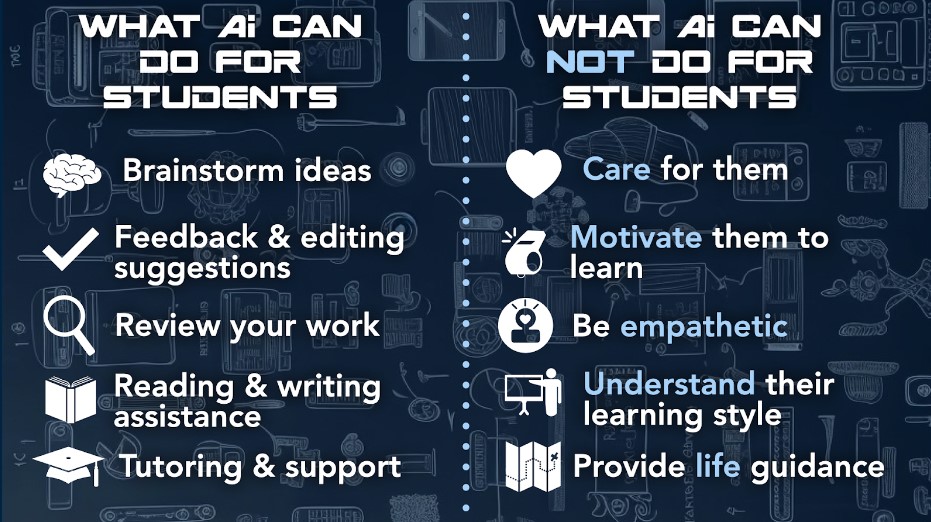5 Things AI Can and Can Not Do For Students
Veteran educator Carl Hooker explores how generative AI tools can disrupt classrooms while also unlocking new opportunities to enhance teaching and learning

The following is a modified excerpt from Carl Hooker's new book, Learning Evolution: New Era of AI in the Classroom.

AI will not replace a teacher. However, a teacher that utilizes AI correctly in their daily work will be a much more effective teacher, which means students will become much more effective learners. Recently, I had a teacher remark that if he uses AI to teach and the students use AI to learn, then what is the purpose of even having humans involved? He was making the same false assumption that many make when first using AI in their work. They assume it will be a replacement, not an assistant. Yes, it can assist teachers with mundane administrative tasks and it can help students get started on a project, but there are many things it will not do.
This really comes down to a blend of human compassion and artificial intelligence. Much like a teacher would suggest the use of scissors and glue for a project, the use of a tool like generative AI also requires a level of guidance with students.
Here are 5 things AI can do for learners right away:
5 Things AI Can Do for Students Right Away
- Brainstorm ideas - Staring at a blank page can be paralyzing. Using a large language model such as ChatGPT to generate a list of adverbs or even a story outline is a great place to start.
- Feedback & editing suggestions - Using a tool such as Quillbot, students can enter a section of text and ask AI for feedback and suggestions to improve their writing.
- Review your work - Once you’ve finished your project or paper, have AI take a look at it and make any final remarks to improve on the output.
- Reading & writing assistance - Some of the most powerful AI tools can help someone with learning challenges in reading and writing. Using tools such as speech-to-text and Microsoft’s Immersive Reader can provide scaffolding and support for the struggling reader or writer.
- Tutoring & support - Not every student has access to a personal tutor. Some may not have the opportunity to also get parental support. As such, those students are at a disadvantage. However, using a tool such as Claude.ai, students can build out their own study cards to practice concepts they are struggling with.
AI-enhanced learning can help students dig deeper into concepts and open up different avenues and perspectives around topics. However, there are many things that it can not do. The following list really highlights the deficits built into AI while also highlighting the strengths of an educator that builds a relationship with their students.
5 Things That AI Can Not Do for Students
- AI can not care for students
- AI can not motivate students to learn
- AI can not be empathetic
- AI can not understand a student’s learning style
- AI can not provide life guidance
By utilizing AI to help with the drudgery of administrative tasks and leveraging it as a “peer tutor” of sorts, teachers can now focus their attention on those skills that are uniquely human. This marriage of human compassion and artificial intelligence will be the new norm of AI-enhanced learning going forward. Keeping that balance in front of mind going forward will unlock many learning opportunities for students in the future that they might not have had in the past.

You can purchase Learning Evolution at Amazon.
Tools and ideas to transform education. Sign up below.
Carl Hooker has spent the past 20+ years in education as a teacher and administrator focused on the thoughtful integration of technology and innovation. He consults for multiple districts across the country and is a frequent speaker at state and national events. In his free time he's an author, DJ, podcast host, Poetry Slammer, and Trivia Night MC. He's the co-founder of the social platform K12Leaders.com. Check out his latest book Ready Set FAIL! Now available for order here: https://mrhook.it/fail Read more of his blogs at Hooked on Innovation.
